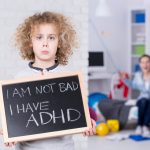A Toxic Start to Life: Counteracting Children’s Unique Vulnerabilities
MITCH KENNEDY, ND, LEED-AP
When does the onslaught of chemicals and pollutants start for each of us? Does it start in puberty as hormones possibly upregulate receptors that could inadvertently bind toxicants rather than assist the growth and maturation hormones of our own bodies? Or, does it start when we first go outside in our strollers or run around in the park playground and inhale micron-sized pollution particles from diesel exhaust, tire, and brake dust (aka PM2.5)? Earlier, you say? What about at the moment of birth when we take in our first breath of air? Environmental toxicity can occur at any stage of life, but it often starts much earlier than you might suspect.
Did you know that growing newborns and toddlers eat, drink, and breathe more toxicants per pound of body weight than adults do?1 Did you know that they also have more skin surface area per pound of body weight compared to adults?2 Not surprisingly, they also spend more time at floor-level, crawl around on their hands and knees, and put more things in their mouths than adults do. Are you starting to get the sense that they might just have far greater exposure and susceptibility to toxicants compared to adults?
Until recently, these facts have been overlooked by public health experts and epidemiologists, which can result in underestimations of toxicant exposure in children. As clinicians routinely seeing pediatric patients for either specific ailments or general wellness check-ups, it is our responsibility to know the potential toxic exposures among children and to recognize their unique vulnerabilities.
In-Utero Toxicant Exposure
Research has shown that exposure to lead during pregnancy increases risks of spontaneous abortion, stillbirths, premature birth, and lower birth weight.3 Much earlier exposures to lead, such as during a woman’s own infancy and adolescence, can result in lead accumulation in bone.4 The lead can then be mobilized during a pregnancy. In a study conducted on 626 lactating women at 1 month post-partum, mean levels of lead in the breast milk were higher in primiparous women than in those having had 2 or more previous pregnancies.4 These findings are consistent with the concept that successive pregnancies will mobilize stored lead, causing maternal blood and bone lead levels to gradually decline.
There are many additional toxic substances women are exposed to during reproductive years that can ultimately end up in the developing fetus. Here are some common sources of placental/fetal toxicity:
- Microplastics (plastic pieces <5 mm in length)
- Toxic metals (eg, lead, cadmium, mercury, gadolinium, cesium, rhodium, gold, and silver)
- Pesticides (including interior home use, garden and lawn use, and workplace exposures)
- Radon (in basements, well water, and in low-lying, igneous rock in outdoor areas)
- Black carbon from toner ink cartridges and industrial processes
- Titanium dioxide (including sunscreen, cosmetics and white-tinted paints)
- Diesel exhaust, car and truck brake and tire dust (PM10 & PM2.5)
- Urban pollution (eg, polycyclic aromatic hydrocarbons and PM2.5 from broiler grills in fast-food restaurants)
The Environmental Working Group’s report5 on umbilical cord toxins explained well why children are so vulnerable:
In 1993 the National Academy of Sciences enumerated, in a Congressionally mandated study, the primary factors that contribute to children’s unique vulnerability to the harmful effects of chemicals (NAS 1993):
• A developing child’s chemical exposures are greater pound-for-pound than those of adults.
• An immature, porous blood-brain barrier allows greater chemical exposures to the developing brain.
• Children have lower levels of some chemical-binding proteins, allowing more of a chemical to reach “target organs.”
• A baby’s organs and systems are rapidly developing and thus are often more vulnerable to damage from chemical exposure.
• Systems that detoxify and excrete industrial chemicals are not fully developed.
• The longer future life span of a child compared to an adult allows more time for adverse effects to arise.
The first trimester is a critical period in terms of potential impacts of toxic exposures on developing neurologic, endocrine, and immune tissues.
For example, prenatal lead exposure in animal models, even at levels below national guidelines, decreases brain dendritic arborization, synaptic plasticity, and myelination.6 Rat studies have also demonstrated adverse neurological effects on the production and release of glutamate and gamma-aminobutyric acid (GABA) and on NMDA receptor function.6 Both human and animal research suggests that such effects can occur well into adolescence.6
In the 2015 Parma Consensus Statement on Metabolic Disruptors,7 31 specialists in endocrine research formally agreed and proclaimed that, among the multiple windows of enhanced susceptibility to endocrine-disrupting chemicals (including paternal, in utero, early childhood, puberty, pregnancy, and aging), in utero and the first few years of life are the most critical windows in terms of metabolic disruptions. They also concurred that medical researchers underestimate the impact of EDCs on obesity, type 1 diabetes, and metabolic syndrome.7
Research examining pesticide exposure among pregnant mothers in Uganda showed dose-dependent disruptions in fetal immune cell function, including a dose-dependent reduction in CD4 T-cells and increases in cytokine production.8 These impacts persisted for at least for several months after delivery.
Other research has shown that polycyclic aromatic hydrocarbons (PAHs) produced by burning a substance (eg, steaks on a grill, hamburgers in a fryer, gasoline in automobiles, trash incinerators, and even forest fires) are known to cross the placenta and damage neonatal DNA.9 Examining 265 mother/newborn pairs, researchers found that both PAH levels (as reflected in the environmental smoke metabolite, cotinine) and procarcinogenic DNA adducts were higher in the newborns than in the mothers.9
A South African study, examining 62 paired samples of maternal and cord blood, revealed trans-placental transfer of most toxic metals. Cadmium, manganese, and copper showed similar concentrations in paired samples.10 Arsenic and cobalt in cord blood were 80% and 45% of maternal concentrations, respectively, whereas mercury in cord blood was double that of the maternal concentration.
Intrauterine exposure to toxicants can also lead to low birth weight in newborns. Well-known culprits include arsenic, lead, mercury, petroleum solvents, polychlorinated biphenyls (PCBs), and pesticides such as dichlorodiphenyltrichloroethane (DDT).11-13 Links between low birth weight and future adult-onset diseases, in general, has been demonstrated over the past 20 years, including cardiovascular disease, diabetes, hypertension, and depression.14,15
Unfortunately, even the most familiar toxicants are still a problem. Between 1999 and 2006, there were slight reductions in both the number of households with lead-based paint hazards and the number of children less than 6 years of age with blood lead levels above the CDC’s reference limit.16 Nonetheless, the 2011 “Healthy Homes Survey” by the US Department of Housing and Urban Development found that an estimated 31.7 million homes in the United States still contained lead-based paint.16
The Need for Greater Awareness
The first 1000 days of a child’s life, from conception on, is an especially critical time period due to extremely rapid growth and development.1 Proper nutrition and protection from toxic exposures are both crucial. Unfortunately, awareness of toxicant impacts on babies and children is astonishingly low.
In a 2021 survey1 of 36 child caretakers in the greater Chicago area, the caretakers were asked the question, “What does the term “children’s environmental health” mean to you?” Only 42% of respondents had heard of the term. The majority of respondents assumed the term related to keeping the child free from harm, physical accidents, safety, illness and keeping the place clean, getting outside enough, recycling and controlling access to poisons. Almost one-third were concerned about exposures to tobacco smoke, pollen, bleach, red food dye, and pesticides. But around one-quarter of respondents had no concerns about these things, stating they did not worry about it, since they couldn’t do anything about it, anyway (lack of empowerment). The survey – the first of its kind – demonstrates the importance of education of childcare givers, especially given that most children under the age of 5 spend their days with non-parental providers in various settings.1
In this same survey, the researchers asked the caretakers if they thought certain toxicants were a problem in their care facilities or the place they worked. This included substances such as lead, asbestos, mold, indoor air pollution, pesticides, and chemicals in art supplies, furniture/rugs in the center, and the children’s toys. Among the responses, 97% felt that lead was “not a problem”; only 3% felt that pesticides, hormones, and antibiotics in foods were a “very serious problem”; and only 3% considered mold, or chemicals in rugs and furniture, or children’s toys to be a “very serious problem.”1
Medical & Societal Costs
Using data from several major agencies, Landrigan and colleagues calculated the annual US medical costs incurred by environmental pollutants for 4 categories of pediatric illness: lead poisoning, neurobehavioral disorders, asthma, and cancer.17 Total annual costs were estimated at $82.4 billion, including:
- $65.1 billion for lead poisoning
- $13.8 billion for neurobehavioral disorders
- $3.0 billion for asthma
- $450 million for childhood cancer
This amounted to 2.8% of total US healthcare costs for 2018-2019. This was considered a low estimate, however, because “it considers only four categories of illness, incorporates conservative assumptions, ignores costs of pain and suffering, and does not include late complications for which etiologic associations are poorly quantified.”17
What Can We Do?
So what can be done to address these threats to unborn babies and children? Not surprisingly, the first step is to clean up the environment in which the parents, caregivers, and children live.
Clean Up the Home Environment
Plastics
- Get rid of plastic products as much as possible. Instead, use glass, metal, ceramic, and wood alternatives.
- Choose wool and natural fabrics for upholstery, curtains, and rugs, and use wood or tile for flooring
- Apply natural finishes to wood and ceramic floor options rather than using polyurethane
- Use “Marmoleum,” a natural flooring product that, unlike linoleum, does not require adhesives
Personal Care Products
- Eliminate as many commercial personal care products as possible, and convert the rest to those listing organic ingredients. Shop brands that advertise these “green” labels: USDA Organic, Natrue.org, Green Seal, Leaping Bunny, EWG Verified.
Cleaning Chemicals & Dry Cleaning
- Eliminate non-green commercial laundry detergents, and launder instead using hot water and soap, or vinegar
- For rags, replace “micro-fiber” cloths with natural-fiber scrubbing pads, old shirts, and towels. Use a high-quality vacuum, preferably with tight filters. HEPA filters will grab a majority of the fine particles in the area.
Landscape
- Seek out Organic Land Care-accredited professionals to assist in converting the yard to organic.18 Never buy or use toxic pesticides or herbicides around your yard or home. There are natural alternative treatments available that you can make yourself or buy, which are certified as organic by the Organic Materials Review Institute (omri.org).19
Toys
- Look for high-quality toys that are durable and have minimal plastic components
Diet
- Buy organic vegetables and fruits
- Get poultry and meat from local suppliers or farmers if possible, so that you know the source
- Minimize beef intake. Since you cannot usually tell what has been applied to the grassland in which the cow has been eating, it is best to limit intake. Some states allow land application of sewage sludge to agricultural fields. This concentrates perfluorinated compounds (PFAS/PFOS) and some heavy metals into the soil, which can then be taken up by the crops or grasses grown there.
- Limit intake of wild or farmed fish, as there is no organic certification available for seafood. Be aware there are now GMO salmon that are farmed inland in tanks.
Water
- Check plumbing for lead. Although lead has been banned from new plumbing installations for 50 years, many homes still contain lead plumbing and solder joints.
- Use a high-quality, whole-house water filter, and schedule regular maintenance to keep it performing at its best
- A less expensive option is an under-the-kitchen sink filtration system or, if this is not possible, a filtered water pitcher
Air Pollution
- Get to know what sources of emissions are within ¼ to ½ mile of your home or workplace
- Become familiar with common sources of pollution near you, such as highways (including exit ramps) and major intersections, trucking pit-stops, major freight warehouses (such as an Amazon warehouse), trash incinerators, factories, and crematoriums. These are all sources of PM2.5 and PM10 and fumes from ozone and PAHs. If your home is downwind of such sites, you may want to consider moving or procuring some really good air filters.
- Keep windows closed on bad-air days. Use the “Breeze-o-Meter cell phone app for air quality forecasts.
- Install whole-house air filters, or at least a mobile air filter that you can keep in your bedroom at night
- Don’t forget to clean your filters, air ducts, and radiators, as they can become sources of accumulated dust, soot, and other particles
Detoxification
- Living in our toxicant-laden world is hard on all of our bodies. But detoxing can be dangerous if not done correctly, since releasing toxins (especially from your body fat when dieting) can cause mobilized toxicants to redeposit in more sensitive parts of the body. This is why I always recommend that detoxing be professionally supervised.
- Finally, to offer children the best chances for a long life of good health, I recommend that women who want to get pregnant undertake a thorough detox that is supervised by a trained healthcare professional
References
- Koester BD, Sloane S, Fujimoto EM, et al . What Do Childcare Providers Know about Environmental Influences on Children’s Health? Implications for Environmental Health Literacy Efforts. Int J Environ Res Public Health. 2021;18(10):5489.
- United States Environmental Protection Agency. Highlights of the Child-Specific Exposure Factors Handbook. National Center for Environmental Assessment: Washington, DC; 2009. EPA Web site. Link available at: https://cfpub.epa.gov/ncea/risk/recordisplay.cfm?deid=200445. Accessed June 11, 2021.
- World Health Organization. Lead poisoning and health. August 23, 2019. WHO Web site. https://www.who.int/news-room/fact-sheets/detail/lead-poisoning-and-health. Accessed June 11, 2021.
- Ettinger AS, Téllez-Rojo MM, Amarasiriwardena C, et al. Levels of lead in breast milk and their relation to maternal blood and bone lead levels at one month postpartum. Environ Health Perspect. 2004;112(8):926-931.
- Houlihan J, Kropp T, Wiles R, et al. Body Burden: The Pollution in Newborns. July 14, 2005. Environmental Working Group. Available at: https://www.ewg.org/research/body-burden-pollution-newborns. Accessed June 11, 2021.
- Adams J, Barone S Jr, LaMantia A, et al. Workshop to identify critical windows of exposure for children’s health: neurobehavioral work group summary. Environ Health Perspect. 2000;108 Suppl 3(Suppl 3):535-544.
- Heindel JJ, Vom Saal FS, Blumberg B, et al. Parma consensus statement on metabolic disruptors. Environ Health. 2015;14:54.
- Prahl M, Odorizzi P, Gingrich D, et al. Exposure to pesticides in utero impacts the fetal immune system and response to vaccination in infancy. Nat Commun. 2021;12(1):132.
- Perera FP, Tang D, Tu YH, et al. Biomarkers in maternal and newborn blood indicate heightened fetal susceptibility to procarcinogenic DNA damage. Environ Health Perspect. 2004;112(10):1133-1136.
- Rudge CV, Röllin HB, Nogueira CM, et al. The placenta as a barrier for toxic and essential elements in paired maternal and cord blood samples of South African delivering women. J Environ Monit. 2009;11(7):1322-1330.
- Grason HA, Misra DP. Reducing exposure to environmental toxicants before birth: moving from risk perception to risk reduction. Public Health Rep. 2009;124(5):629-641.
- Lanphear BP, Vorhees CV, Bellinger DC. Protecting children from environmental toxins. PLoS Med. 2005;2(3):e61.
- Tatsuta N, Kurokawa N, Nakai K, et al. Effects of intrauterine exposures to polychlorinated biphenyls, methylmercury, and lead on birth weight in Japanese male and female newborns. Environ Health Prev Med. 2017;22(1):39.
- Barker DJ. Fetal origins of coronary heart disease. BMJ. 1995;311(6998):171-174.
- Thompson C, Syddall H, Rodin I, et al. Birth weight and the risk of depressive disorder in late life. Br J Psychiatry. 2001;179:450-455.
- Cox DC, Dewalt G, O’Haver R, Salatino B. American Healthy Homes Survey: Lead and Arsenic Findings. April 2011. U.S. Department of Housing and Urban Development; Office of Healthy Homes and Lead Hazard Control. HUD Web site. https://www.hud.gov/sites/documents/AHHS_REPORT.PDF. Accessed June 11, 2021.
- Landrigan PJ, Schechter CB, Lipton JM, et al. Environmental pollutants and disease in American children: estimates of morbidity, mortality, and costs for lead poisoning, asthma, cancer, and developmental disabilities. Environ Health Perspect. 2002;110(7):721-728. (Updated by the author to reflect 2018 US expenditures).
- Organic Land Care. Homeowner Resources. Available at: https://nofa.organiclandcare.net/homeowner-resources/. Accessed June 18, 2021.
- Organic Materials Review Institute. What We Do. Available at: https://www.omri.org/what-we-do. Accessed June 24, 2021.
Resources
Leaping Bunny – no animal testing: https://www.leapingbunny.org/
Natrue.org label – protects and promotes natural and organic cosmetics worldwide
GreenSeal GS-50 – no carcinogenic ingredients in solutions and cosmetics applied to skin
USDA Organic – at least 95% of the materials in the food/product are certified organic
EWG Verified – reviewed against list of known toxicants

Mitch Kennedy, ND is coming out with a new book. You can get a free copy of Detox for Everybody: Your Guide to a Long and Healthy Life by visiting: https://healwithnature.com/books/. Mitch is a naturopathic physician practicing environmental medicine in Connecticut. He was the first naturopathic physician credentialed at the University of Connecticut Health Center, (UCHC), the largest hospital in Connecticut. Before becoming a doctor, Mitch ran his own environmental consulting firm for 15 years, using his LEED-“Green Building” to help build homes, offices, and factories in a non-toxic and energy-efficient way. HealwithNature.com










